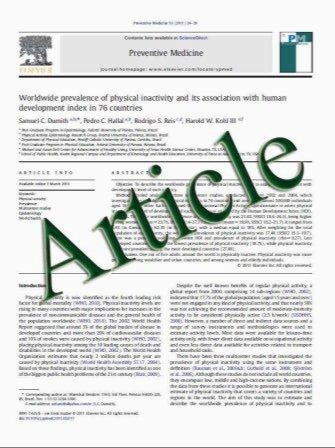Time course of heme oxygenase-1 and oxidative stress after experimental intracerebral hemorrhage
- نوع فایل : کتاب
- زبان : انگلیسی
- مؤلف : Gaiqing Wang , Qidong Yang , Guanglai Li , Li Wang , Weimin Hu , Qingping Tang , Dongfang Li , Zhitang Sun
- چاپ و سال / کشور: 2011
Description
Background Heme oxygenase-1 (HO-1), the rate-limiting enzyme for heme catabolism and iron production, its role in intracerebral hemorrhage (ICH) is controversial. The study was to investigate correlations between brain oxidative injury and HO-1 after experimental ICH. Method Sprague–Dawley rats received intra-striatal infusions of 100 ىl autologous whole blood as ICH models. HO-1 were examined by immunohistochemical and reverse transcription polymerase chain reaction (RT-PCR) analysis. Brain oxidative stress was quantitated by malondialdehyde (MDA); antioxidation were measured by copper–zinc superoxide dismutase (Cu/Zn-SOD) activity using RTPCR assay. Results The expression of the HO-1 upregulated and reached its peak at days 3 and 7 after ICH (P<0.01). There was a significant increase of MDA and a top at 3-day post- ICH (P<0.01); Cu/Zn-SOD was upregulated post-ICH and reached the top at day 7 (P<0.001); HO-1 was correlated significantly with brain MDA content at days 7 and 14 following ICH (r=0.435–0.501, P<0.001) but there is no definite correlation between them on 1 to 3 days (P>0.05); conversely, HO-1 was correlated significantly with Cu/Zn- SOD on 1 to 3 days after ICH (r=0.433–0.621, P<0.001) but there is no definite correlation between them at days 7 and 14 (P>0.05). Conclusions HO-1 has both antioxidant and prooxidant properties in ICH. The early upregulation of HO-1 possibly fit with the events and be protective against oxidative stress, whereas its overexpression in the late stages may result in its dysfunction and be toxic. So it should be prudent to intervene ICH with the inhibitor/activator of HO-1.
Acta Neurochir (2011) 153:319–325 DOI 10.1007/s00701-010-0750-2Received: 27 April 2010 / Accepted: 12 July 2010 / Published online: 6 August 2010 # Springer-Verlag 2010


